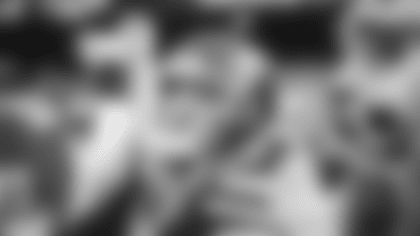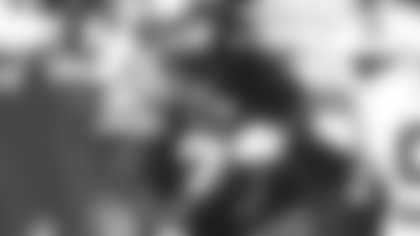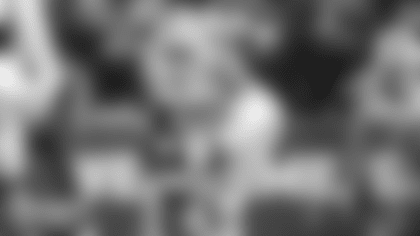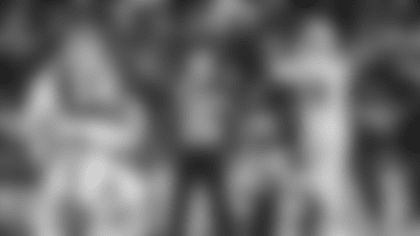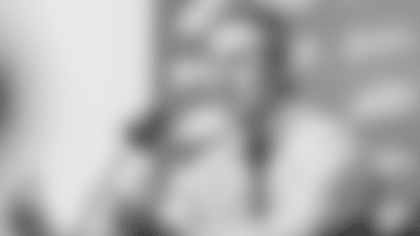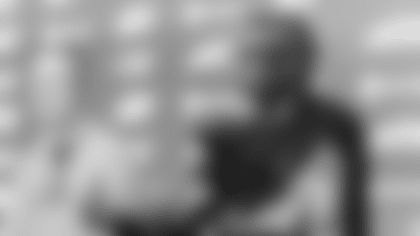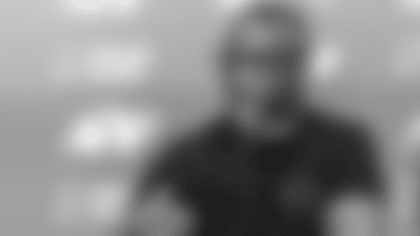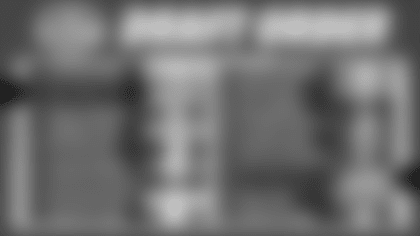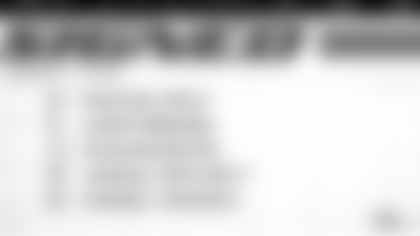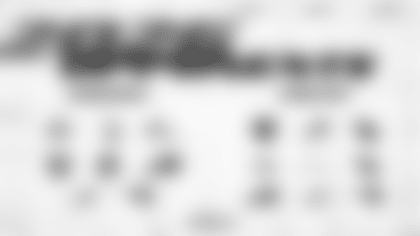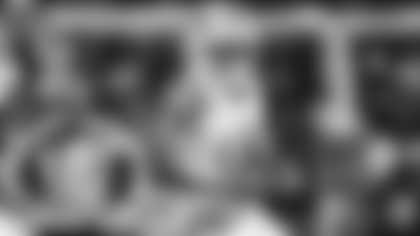The following is an article written by Real Football Services. They will be a frequent contributor on www.newyorkjets.com in the weeks leading up to the draft.
We've talked about the Jets options at QB in this month's draft. We've also talked about their need to address the offensive line, and look towards finding Curtis Martin's replacement at running back. The final piece is the team's receiving targets in the passing game.
While last year's struggles in the offense stemmed largely from the Jets issues at QB, they still have needs at the receiver position. The unit is loaded with possession type receivers, but as a whole, the group lacks experience and hasn't provided much production in the NFL. With the expected retirement of Wayne Chrebet, the receiving corps needs another playmaker.
Laveranues Coles is the leader of the group and displays excellent speed and quickness. He has very good hands and will make the tough catches over the middle, in traffic, and when in the open field, has the ability to make defenders miss. Justin McCareins is another player with tremendous tools; speed, quickness and leaping ability, but has just two receptions of 40 yards in his two seasons in New York. Jerricho Cotchery is the prototypical slot receiver who lacks ideal size and is quicker than he is fast, but can be very productive with his reliable hands and strong route running ability.
The Jets found a veteran receiver in free agent Tim Dwight, but he is now in his ninth season and is expected to have more of a role on special teams than as a receiver. They also have Dante Ridgeway, who has two NFL catches on his resume, and Jovan Witherspoon is a talented first year player, but hasn't played in an NFL game.
This year's crop of wide receivers may be one of the worst in recent memory. The group lacks depth, although Florida's Chad Jackson and Ohio State's Santonio Holmes, both juniors, are highly rated players, they are not the marquee playmakers we have come to expect in the draft every year. However, the Jets will have opportunities to select a receiver who can bring the needed depth and skills to the receiving unit.
Jackson and Holmes are expected to be mid-first round selections, too much of a reach for the Jets at #4, and likely already off the board by the time they pick again at #29. After those two players there is a tremendous drop off at the WR position. Sinorice Moss of Miami, the brother of former Jets WR Santana Moss, is the next highest ranked WR. Sinorice doesn't have his brother's speed, lacks ideal size and doesn't project as a starting caliber player. Arizona State's Derek Hagan was a productive receiver in college, but the knock on him was a lack of speed. He seemed to answer those questions with a 4.4 time in the 40 at the combine. But neither player is expected to come off the board before the middle of the second round and both are graded too low for the Jets to reach for them at the top of Round Two where they hold the 35th overall pick.
However, in the third round, there could be two good receivers available. Notre Dame's Maurice Stovall carries a late second round grade, and if the Jets are fortunate, he could slip to them at the top of round three. Stovall is big at 6-4, 218, has 4.5 speed and a 35-inch vertical leap. He's an excellent athlete with an outstanding work ethic and has experience playing in Charlie Weis' pro style offense in South Bend, the same system that Jets head coach Eric Mangini saw for so many years in New England with the Patriots. The other player is Oklahoma's Travis Wilson. Another big receiver, he carries many of the same attributes as Stovall and has actually been compared favorably to Justin McCareins. His production suffered as a senior because of an ankle injury and a freshman QB, but he has the talent to contribute at the NFL level.
The best fit for the Jets may come in the fourth round when they should have the opportunity to select Auburn's Devon Aromashodu. A late invite to the Senior Bowl and the combine, Aromashodu has blazing speed (4.3 in the 40) and showed great athletic ability with a 39-inch vertical and a 10-foot broad jump at the combine. At 6-2, 202 he has the ability to stretch the field and could provide a big downfield target, giving the Jets a nice compliment to Coles and McCareins.
The Jets also need to get more receiving production out of the tight end position. Doug Jolley came to New York with big expectations in '05, but things didn't pan out as he started just seven games, and Chris Baker missed half the season with a broken left fibula. Both return this season, but this year's draft class of TE's has some outstanding athletes who possess excellent receiving skills.
Maryland's Vernon Davis may be the best receiver in the draft at any position. The 6-3, 254-pounder was the talk of the combine when he turned in a 42-inch vertical leap and a 4.3 time in the 40 to go with his excellent production at Maryland. Some scouts are projecting him as a top five overall selection in this draft, and although we don't expect the Jets to select him at #4, he wouldn't be a tremendous reach there. There are several other prospects sprinkled throughout the first day including UCLA's Marcedes Lewis, who lacks ideal speed but is a physical specimen and has good receiving skills, Georgia's Leonard Pope, who has excellent potential as a red zone receiver at 6'7", Notre Dame's Anthony Fasano, a blue collar worker in the mold of Mark Bavaro, Colorado's Joe Klopfenstein and Western Michigan's Tony Scheffler who both were extremely productive receivers in college.
But another player who could slip to the Jets at the end of Day One (the Jets have the final pick in Round Three) is USC's Dominique Byrd. He has had several injuries and has a perceived lack of speed, but he impressed scouts at the Senior Bowl with his ability to run the seam and make the tough catches in traffic. He has competed at a very high level with the Trojans and could be the big, athletic, middle-of-the-field-receiver the Jets need to take pressure off the perimeter receivers.


